Last Updated on November 9, 2024 by Kittredge Cherry
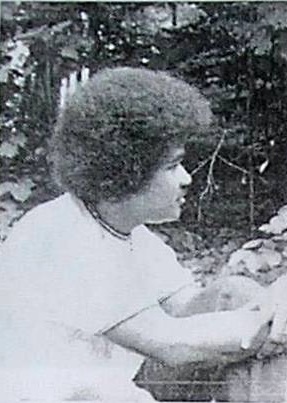
Grant-Michael Fitzgerald was an openly gay African American Roman Catholic brother who advocated for LGBTQ rights in the 1970s and ‘80s. He was diagnosed with AIDS and died in a Wisconsin hospice on Nov. 10, 1986 at age 39.
Renowned black gay professor and minister James Tinney described Fitzgerald as “the first openly gay black Christian in a public role in the U.S.” in the eulogy at his memorial service.
This brave LGBTQ-rights pioneer faced double discrimination not only due to his sexual orientation, but also because of his race as a black man in U.S. society and one of the few black members of his Catholic religious order.
“The church needs to be where people are hurting, ministering to their needs, willing to fight against the sins of sexism, racism and homophobia. So I find myself working with groups struggling around those issues,” Fitzgerald said in a 1981 interview in “Insight: A Quarterly of Lesbian/Gay Christian Opinion.”
Called to ministry before he knew he was gay
Grant-Michael Fitzgerald was born Sept. 11, 1947 in Kingston, New York. He was baptized in a Catholic church in Philadelphia in May 1953, grew up in a black neighborhood and always went to Catholic schools.
In 1967 he entered the Society of the Divine Savior, known as the Salvatorians, an international Roman Catholic order of brothers, priests, nuns and lay people. Their U.S. headquarters is in Milwaukee, Wisconsin. Another significant Salvatorian is Robert Nugent, who cofounded the LGBTQ Catholic organization New Ways Ministry in 1977. Fitzgerald made his profession of vows in 1969. He studied at two Wisconsin colleges, Mount St. Paul in Waukesha and Dominican College in Racine, earning a degree in human relations.
“As a brother, my role and vows are similar to a priest’s, but I can’t administer the sacraments…. Some people see brothers as ‘male nuns’ because we do so much teaching, counseling and other work with people,” he explained in his Insight interview.
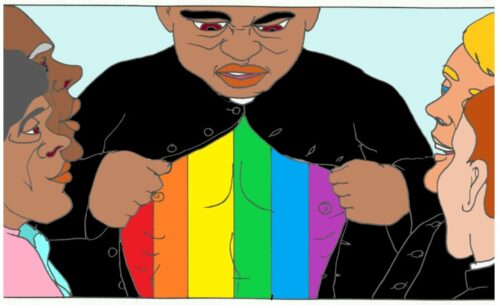
Fitzgerald’s life story is told in the 2023 book “Heavenly LGBTQ+: : Queer Icons from LGBTQ Life, Religion, and History” by Jan Haen, a Dutch artist and Roman Catholic priest. He includes scenes that are rarely if ever portrayed by artists, such as Fitzgerald discovering that he had a rainbow identity under his religious role (pictured above). It is the sequel to his 2022 graphic non-fiction book “Heavenly Homos, Etc..”
Fitzgerald went on to say that he “felt a call to ministry at a very young age,” but it took much longer for him to realize he was gay. He came out to his family and then to the Salvatorians at age 24. Church officials told him that it was not a problem as long as he could live his vow of chastity.
Fitzgerald co-founded Gay Ministry Task Force in 1972
Fitzgerald was one of the original seven members who founded the Salvatorian Gay Ministry Task Force in 1972. “And with that announcement the Catholic church in America stepped into the issue of ministering to lesbians and gay males,” he told Insight. He co-authored the 1974 book “Ministry/USA: A Model for Ministry to the Homosexual Community” by Salvatorian Gay Ministry Task Force — two years before publication of the landmark book “The Church and the Homosexual” by gay Jesuit priest John McNeill.
In 1978, this task force helped establish the first parish ministry to gays in inner-city Milwaukee. Later the task force was reorganized as the National Center for Gay Ministry. Fitzgerald became a leader in the Milwaukee branch of the Council on Religion and the Homosexual and was featured as a black gay person of faith in the news media, including an article in the Advocate, a national LGBTQ magazine.
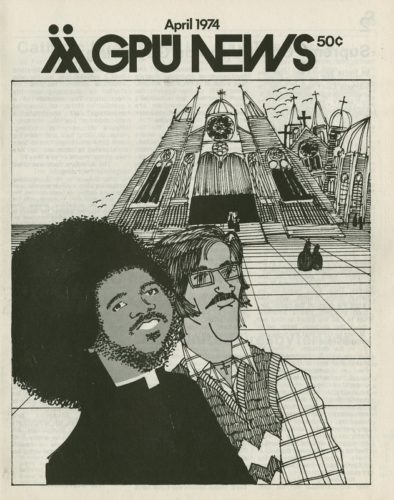
Grant-Michael Fitzgerald’s book and ministry were discussed in the cover story for the Gay People’s Union (GPU) News in April 1974.
Over the years Fitzgerald ministered in a wide variety of settings and locations. His odyssey included service as a teacher at the Harambee Education Center, a predominately black high school in Milwaukee; resident counselor at Southeastern Wisconsin Homes, a group home for teen boys in Milwaukee; supervisor of a U.S. Army child-care center in Stuttgart, Germany; teacher at a Philadelphia day-care center; service provider for the elderly and needy in Philadelphia; case worker with immigrants; counselor at a Catholic Charities youth home in Washington, DC. He also worked in New York and Alabama.
He was diagnosed with AIDS and in 1984 he moved into the Salvatorian retirement community in St. Nazianz, Wisconsin. He died on Nov. 10, 1986 and is buried in the Salvatorian community cemetery in St. Nazianz. The eulogy at his memorial service in Philadelphia was delivered by James Tinney, black gay professor who founded an African American LGBTQ church in Washington DC in 1982.
A chapter on his life and ministry, titled “The Disavowal of Brother Grant-Michael Fitzgerald,” is included in the 2016 book “Not Straight, Not White: Black Gay Men from the March on Washington to the AIDS Crisis” by University of Illinois history professor Kevin Mumford. He analyzes how social-justice movements both marginalized and inspired Fitzgerald and other black gay men of his time.
Links related to Grant-Michael Fitzgerald
Bro. Grant-Michael Fitzgerald: An interview with a Catholic brother (“Insight: A Quarterly of Lesbian/Gay Christian Opinion,” special issue “Black, Christian and Gay” with guest editor James Tinney, Vol 4 No 4, 1981)
Brother Grant-Michael Fitzgerald SDS profile (LGBT Religious Archives Network)
___
Top image credit:
Grant-Michael Fitzgerald
___
This post is part of the LGBTQ Saints series by Kittredge Cherry. Traditional and alternative saints, people in the Bible, LGBT and queer martyrs, authors, theologians, religious leaders, artists, deities and other figures of special interest to lesbian, gay, bisexual and transgender and queer (LGBTQ) people and our allies are covered.
This article was originally published on Q Spirit on Dec. 4, 2021, and was updated with new material on Nov. 9, 2023.
Copyright © Kittredge Cherry. All rights reserved.
Qspirit.net presents the Jesus in Love Blog on LGBTQ spirituality.

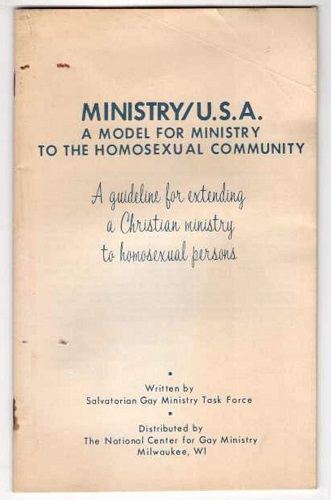


















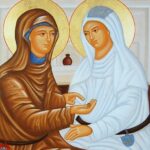
Oh, my: “He went on to say that he “felt a call to ministry at a very young age,” but it took much longer for him to realize he was gay. He came out to his family and then to the Salvatorians at age 24. Church officials told him that it was not a problem as long as he could live his vow of chastity.” Forgive me for pointing out the elephant in the room: Taking the vow of chastity literally, actually pits Spirit against Sex, pits God against Gay, pits Guilt against Love. Unless Grant-Michael Fitzgerald contracted AIDS by “Immaculate Infection”, we must appreciate that he must have actually liberated himself from taking chastity literally. But it must have tortured him along the way.
Instead, let’s reject soul-destroying hypocrisy and abrogate the ideal of literal chastity. Instead, there is the advice once given to Christopher Isherwood by his guru Swami Prabhavananda: Regard your male lover as Krishna. For a Christian, the “translation” is obvious: Regard your lover as Jesus. (I can only speak here as one gay male to my brother-comrades.) In other words, “chastity” becomes making love to the divinity in/of your sex partner. “Namaste!” in this particular context means: “The Christ in me makes love to the Christ in you.” And, indeed: “Love your sex partner as yourself!” And this, not the ascetic rejection of sexuality, really is the “good news” and the “hope of glory”!